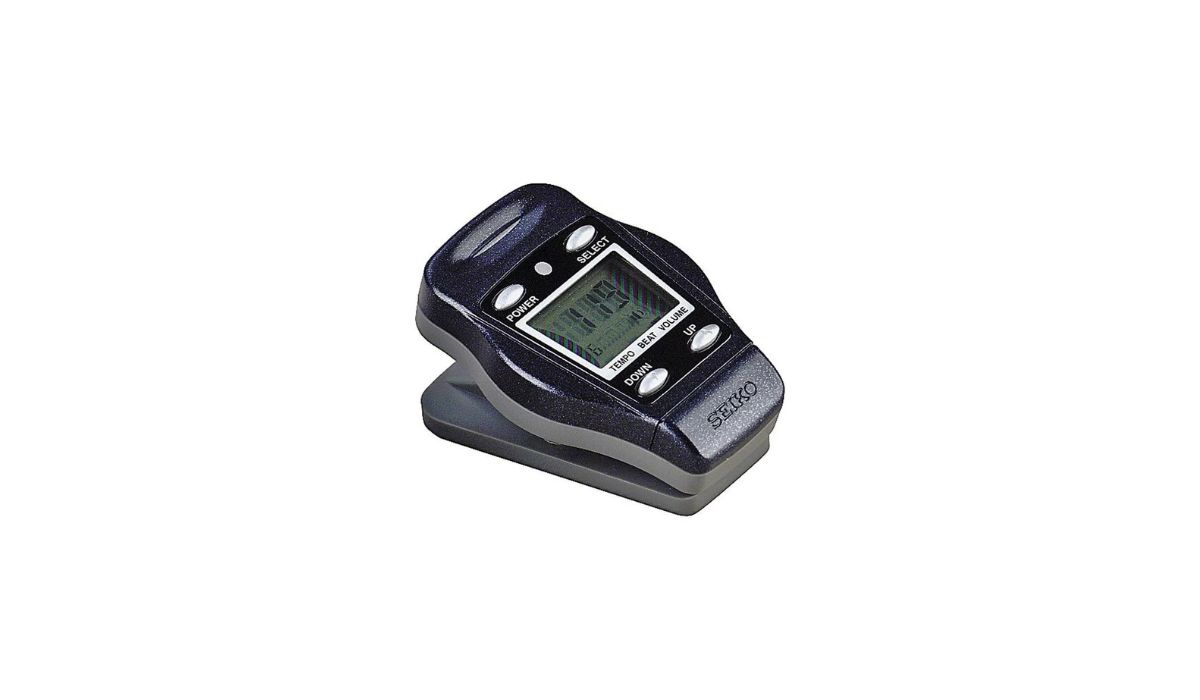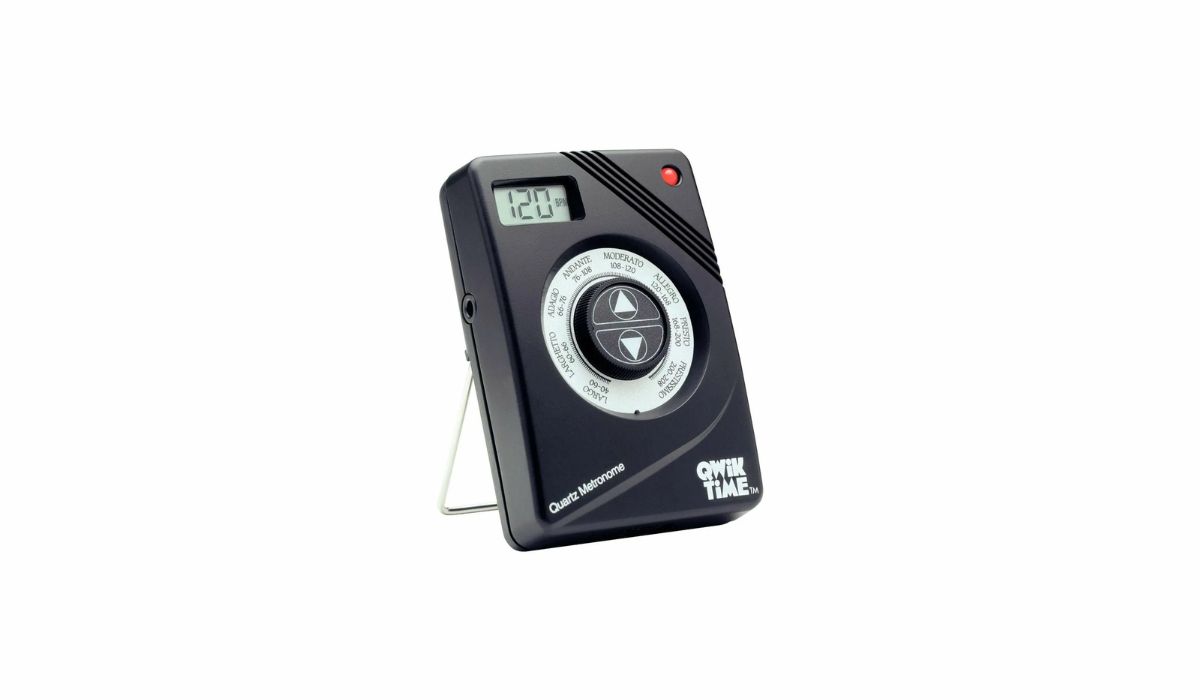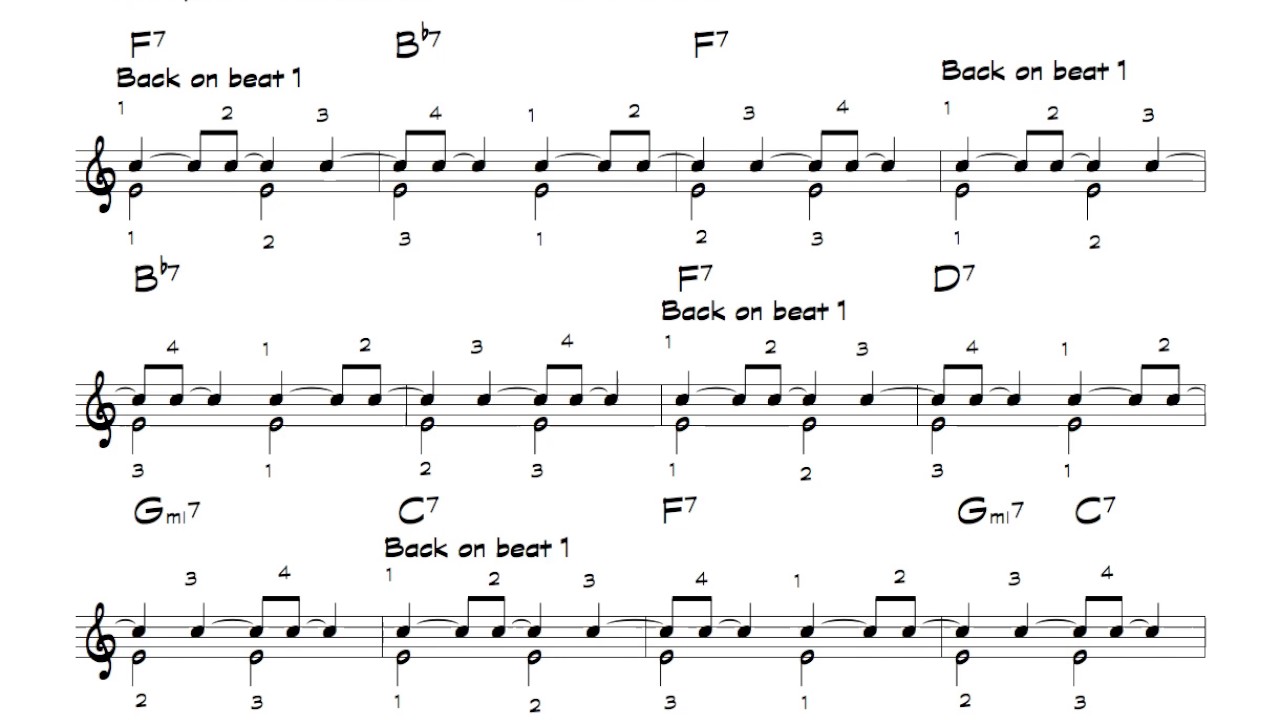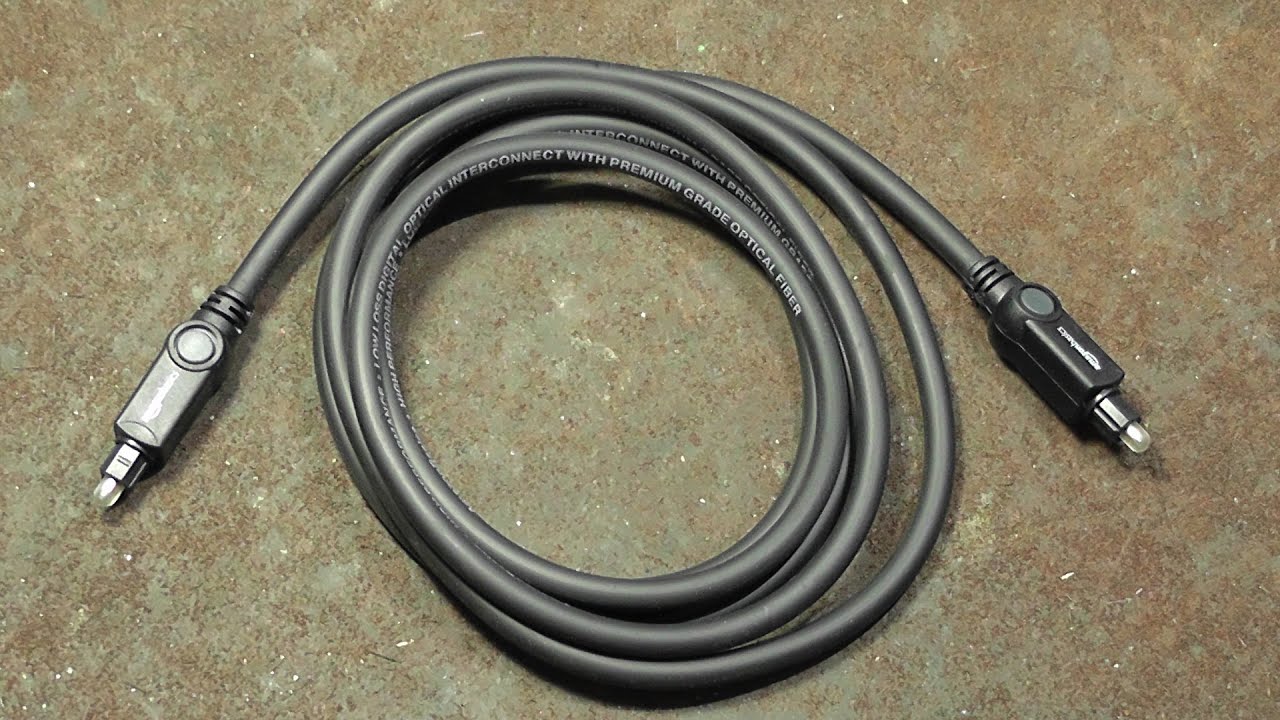Home>Production & Technology>Metronome>What Is A Metronome In Running


Metronome
What Is A Metronome In Running
Published: January 14, 2024
Discover the benefits of using a metronome in running to improve your pace and rhythm. Find out how a metronome can enhance your training and help you achieve your running goals.
(Many of the links in this article redirect to a specific reviewed product. Your purchase of these products through affiliate links helps to generate commission for AudioLover.com, at no extra cost. Learn more)
Table of Contents
Introduction
Welcome to the world of running! As a runner, you are constantly striving to improve your speed, endurance, and overall performance. One key factor that can make a significant difference in your running journey is rhythm and pacing. This is where a metronome comes into play. While commonly associated with music, a metronome also has a valuable role in the realm of running.
A metronome is a device that produces a steady, audible beat at a set tempo. Historically used by musicians to maintain consistent tempo and rhythm, this simple tool has found its way into the world of running as a valuable training aid. With the help of a metronome, you can optimize your running cadence, improve your form, and increase your overall efficiency.
In this article, we will explore the concept of a metronome in running—what it is, how it works, and why it’s important. We will also discuss the benefits of incorporating a metronome into your running training and provide you with some useful tips for integrating it into your routine. So, let’s dive in and discover how a metronome can take your running to the next level!
Definition of a Metronome in Running
In the context of running, a metronome is a device or application that produces a constant and repetitive sound or visual cue at a specific tempo or beats per minute (BPM). It helps runners establish and maintain a consistent cadence or step rate throughout their run.
Just like in music, where a metronome helps musicians keep time and stay in sync with the rhythm, a metronome in running serves a similar purpose. By providing a steady and audible beat, it helps runners develop a more efficient and balanced stride.
The tempo of the metronome is measured in BPM, which represents the number of beats played per minute. In running, the ideal cadence or step rate varies depending on factors such as individual running style, experience, and speed. However, a common target cadence is around 180 steps per minute (SPM).
With the help of a metronome, runners can train themselves to match their foot strikes with the beat, gradually ingraining a more consistent and efficient running rhythm. By maintaining a steady cadence, runners can reduce the risk of overstriding, which can lead to inefficient running form and increased chances of injury.
It’s important to note that a metronome can come in different forms, including traditional mechanical devices, smartphone apps, or even wearable devices such as smartwatches. The choice of which type to use ultimately comes down to personal preference and accessibility.
Importance of a Metronome in Running
The use of a metronome in running offers several notable benefits that can greatly enhance your performance and overall running experience. Let’s explore the key reasons why incorporating a metronome into your training can be so important:
- Optimizes Cadence: One of the primary benefits of using a metronome is that it helps you establish and maintain an optimal cadence. A higher cadence, typically around 180 steps per minute, can promote more efficient running mechanics, reduce ground contact time, and minimize the risk of injuries such as shin splints and knee pain.
- Improves Running Form: A metronome encourages proper running form by promoting a more compact and balanced stride. It helps you focus on landing closer to your center of gravity and ensures that both feet spend an equal amount of time on the ground, leading to improved efficiency and energy conservation.
- Enhances Speed and Endurance: By maintaining an optimal cadence, you can increase your turnover rate, enabling you to run faster without overstriding. Additionally, a metronome helps improve endurance by preventing fatigue caused by inefficient running form, allowing you to maintain a consistent pace over longer distances.
- Aids in Mental Focus: Running with a metronome requires concentration and mental engagement. It serves as a rhythmical companion, providing a focal point and aiding in diverting attention away from any discomfort or fatigue that may arise during your run.
- Develops Consistency: Regularly using a metronome in training helps ingrain a consistent running rhythm. Over time, this enables your body to develop muscle memory and establish a natural cadence, making it easier to maintain even when running without the metronome.
It’s important to note that while a metronome can be a valuable tool, it is not a one-size-fits-all solution. Each runner is unique, and factors such as personal preference, running style, and injury history should be considered when incorporating a metronome into your training routine. Experimentation and gradual adjustments are key to finding the tempo that works best for you.
Now that we understand the importance of a metronome in running, let’s delve into how it works and how to incorporate it effectively into your training sessions.
How a Metronome Works in Running
A metronome operates on a simple principle: it produces a consistent beat at a predetermined tempo or beats per minute (BPM). In the context of running, the metronome provides an auditory or visual cue that helps maintain a steady cadence throughout your run.
When using a metronome in running, you have the flexibility to choose the desired BPM that aligns with your preferred cadence or training goals. Most running metronome apps or devices offer customizable settings, allowing you to adjust the tempo to match your personal needs.
To use a metronome effectively in running, follow these steps:
- Select a Metronome Tool: Choose a metronome device or app that suits your preferences. There are various options available, including smartphone apps, wearable devices, or dedicated metronome devices.
- Set the Desired BPM: Determine the BPM or cadence that you want to maintain during your run. Starting with a target cadence of 180 SPM is often recommended, but feel free to adjust it based on your current ability and running style.
- Configure Visual or Auditory Cues: Customize the metronome settings to provide either a visual or auditory cue. Visual cues often come in the form of a blinking light or a moving graphic, while auditory cues can be a simple beep or a specific sound pattern.
- Incorporate the Metronome Into Your Run: Begin your run and sync your steps with the metronome beat. As you run, focus on maintaining a steady rhythm by landing your feet in sync with the metronome’s cues. This will help you develop a consistent and efficient stride.
It’s worth noting that using a metronome may feel awkward or challenging at first, especially if you’re not accustomed to running with a specific rhythm. However, with practice and persistence, the metronome will become a valuable tool in your training arsenal.
Additionally, it’s essential to note that a metronome doesn’t have to be used for every run. It can be beneficial to incorporate it during specific workouts, such as speed training or form-focused sessions. Alternating between using and not using the metronome allows you to develop a natural sense of rhythm while still reaping the benefits of the metronome’s guidance.
Now that we understand how a metronome works in running, let’s explore the numerous benefits that it brings to your training.
Benefits of Using a Metronome in Running
The use of a metronome in running can yield numerous benefits that can significantly enhance your performance and improve your overall running experience. Let’s take a closer look at some of these benefits:
- Improved Cadence: A metronome helps establish and maintain a consistent cadence or step rate. By matching your foot strikes with the metronome beat, you can gradually increase your cadence to a more optimal range, resulting in a more efficient running stride.
- Enhanced Running Form: Running with a metronome promotes better running mechanics by encouraging a compact and balanced stride. It helps you land closer to your center of gravity, improving your posture, reducing the risk of overstriding, and minimizing the impact on your joints.
- Increased Efficiency: By improving your running form and maintaining a steady cadence, a metronome can make your running more efficient. This means that you can cover more distance with less effort, leading to better endurance and the ability to maintain a consistent pace for longer durations.
- Reduced Risk of Injury: Overstriding and inefficient running mechanics can often lead to injuries such as shin splints, knee pain, and plantar fasciitis. By using a metronome to develop a strong, balanced stride, you can minimize the impact on your body and reduce the risk of these common running injuries.
- Improved Speed: Maintaining a higher cadence with the help of a metronome allows you to increase your turnover rate. This can lead to faster running times, as you are spending less time on the ground and propelling yourself forward more efficiently.
- Enhanced Mental Focus: Running with a metronome requires concentration and focus. The rhythmic beat serves as a distraction from discomfort or fatigue, helping to keep you mentally engaged and motivated throughout your run.
- Developed Muscle Memory: Consistently using a metronome in training allows your body to develop muscle memory for a specific cadence. Over time, this cadence becomes more natural and can be maintained even without the use of a metronome.
Overall, a metronome acts as a valuable training tool that helps you optimize your running mechanics, increase efficiency, and reduce the risk of injuries. It serves as a guide to assist you in finding and maintaining your ideal running rhythm.
Now that we understand the benefits of using a metronome in running, let’s explore some practical tips on how to incorporate it effectively into your training routine.
Tips for Incorporating a Metronome in Running Training
Using a metronome in your running training can be a game-changer, but it’s important to approach it thoughtfully and gradually. Here are some tips to help you effectively incorporate a metronome into your running routine:
- Start Gradually: If you’re new to running with a metronome, begin by using it for shorter, easier runs. This allows your body to adapt gradually to the new cadence and running rhythm.
- Find Your Optimal Cadence: Experiment with different metronome settings to find the BPM that feels most comfortable and natural for you. While a target cadence of 180 SPM is often recommended, it may vary depending on factors such as your running style and individual biomechanics.
- Match the Beat: Focus on syncing your foot strikes with the metronome beat. Strive to land on the beat consistently to develop a smooth and balanced running stride.
- Use Intervals: Incorporate intervals into your training by alternating between running with and without the metronome. This allows you to develop a sense of rhythm while still working on your natural cadence and form.
- Record Your Progress: Keep track of your cadence and any improvements you notice over time. This helps you gauge your progress, adjust your training, and fine-tune your running form to become more efficient.
- Focus on Form: Pay attention to your running form while using the metronome. Strive for an upright posture, relaxed arms, and a slight forward lean. Center your footstrike beneath your body, actively engaging your core and hip muscles.
- Combine with other Training Techniques: Use the metronome in conjunction with other training techniques, such as speed workouts or hill repeats. This allows you to practice maintaining a consistent rhythm under different conditions, enhancing your overall running performance.
- Listen To Your Body: While a metronome can be a valuable training tool, it’s important to listen to your body and make adjustments as needed. If you feel any discomfort or strain from the increased cadence, slow down or decrease the intensity of your training until you’re comfortable.
Remember, the goal of incorporating a metronome into your running training is to develop a more efficient and balanced stride, not to force yourself into an unnatural cadence. Be patient, consistent, and adaptable in your approach and allow yourself time to adjust and find what works best for you.
Using a metronome can bring structure and discipline to your training, ultimately helping you become a more efficient and injury-resistant runner. Experiment with different techniques and enjoy the process of discovering your optimal cadence and running rhythm.
Now, let’s address some common misconceptions about metronomes in running.
Common Misconceptions about Metronomes in Running
While the use of metronomes in running can offer numerous benefits, there are a few common misconceptions that are important to address. Let’s debunk these misconceptions and gain a clearer understanding of the role that metronomes play in running:
- Misconception: Metronomes are only for beginners. It’s a common belief that metronomes are only for novice runners who are trying to establish a consistent running rhythm. However, metronomes can be beneficial for runners of all levels, from beginners to elite athletes. They can help fine-tune running mechanics, optimize cadence, and improve running efficiency at any stage of your running journey.
- Misconception: A metronome cadence of 180 SPM is the only correct option. While a cadence of 180 steps per minute (SPM) is often recommended as a target, it’s important to note that every runner is unique. The ideal cadence may vary based on factors such as running experience, biomechanics, and speed. It’s essential to find the cadence that feels natural and comfortable for your body, rather than adhering strictly to a specific number.
- Misconception: Using a metronome limits creativity and enjoyment in running. Some runners worry that relying on a metronome may make their runs feel robotic or take away the freedom to listen to their body and enjoy their surroundings. However, the metronome can be seen as a tool to enhance your running experience rather than restrict it. It can assist in establishing good running form, optimizing efficiency, and providing a rhythmic foundation for a more enjoyable and consistent running experience.
- Misconception: Once you’ve mastered the metronome, you no longer need it. While the ultimate goal of using a metronome is to develop a natural running rhythm, it doesn’t mean you have to completely abandon it once you’ve achieved this. Incorporating occasional metronome runs into your training can help reinforce proper form and remind your body of the optimal cadence. It can also serve as a useful tool during speed workouts or when you need to refocus on maintaining a specific rhythm.
- Misconception: Metronomes are a quick fix for all running problems. While a metronome can be a valuable training tool, it’s important to recognize that it is not a magic solution to all running issues. It can assist in improving cadence, running form, and efficiency, but it’s crucial to consider other aspects of your training, such as strength, flexibility, and overall technique, to address any underlying problems that may affect your running performance.
By dispelling these misconceptions, we can embrace the true value of metronomes as a training aid in running. They can help us optimize our running mechanics and lead to better performance, efficiency, and enjoyment on our runs.
Now, let’s summarize what we’ve covered in this comprehensive guide to metronomes in running.
Conclusion
Incorporating a metronome into your running training can be a game-changer, helping you optimize your cadence, improve running form, increase efficiency, and reduce the risk of injuries. By maintaining a consistent tempo and developing a natural running rhythm, you can enhance your performance and enjoy a more enjoyable running experience.
A metronome serves as a valuable tool in training, providing a steady beat that acts as a guide to help you establish and maintain an optimal cadence. Whether you’re a beginner or an experienced runner, the metronome can assist you in fine-tuning your running mechanics, increasing speed, and building endurance.
Remember, it’s essential to start gradually, find the cadence that suits your individual needs, and incorporate the metronome into your training intelligently. Experiment with different settings, combine it with other training techniques, and remain attentive to your body’s signals to ensure a gradual and safe transition.
While using a metronome can be a powerful training tool, it’s important to recognize that it’s just one piece of the running puzzle. Strengthening weak areas, improving flexibility, and maintaining a diverse training regimen are equally important in achieving your running goals.
Ultimately, a metronome can help you develop a consistent and efficient stride, leading to improved running performance and a reduced risk of injuries. Embrace it as a companion along your running journey, and watch as it transforms your training and takes your running to new heights.
So why wait? Grab a metronome, set your pace, and embark on your next run with rhythm and purpose.











